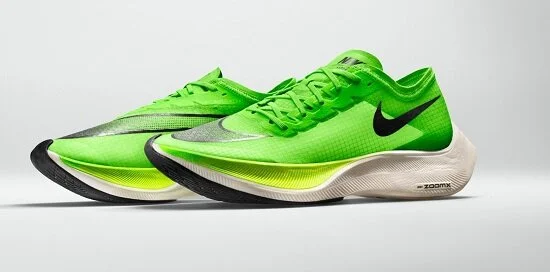The Running Shoe Debate
Running shoes are forever evolving, sometimes for the sell factor and often for performance gains. Just think how far track spikes have come over the years and how often your favourite model of shoe changes – so damn frustrating by the way!
Most sports have rules which govern the integrity of the sport – swimming, cycling and tennis are examples of this - where limitations are placed on technology to ‘even out’ the playing field. However, of late, running is struggling with the recent developments of shoes within its sport.
Ross Tucker from Science of Sport recently claimed the ‘Ross rule’:
“When the difference made by technology is larger than the normal difference between athletes, then the integrity of the result is changed. If that technology is unevenly distributed, with differences in the access to it, then it becomes unfair”.
BRING ON THE NIKE DEBATE…
Nike has filled this void in the running rules from as far back as 2013 when they started developing their new shoes. Their shoes have been a key component of many world record breaking performances, significant PB’s and bringing athletes not commonly seen to the forefront of running races.
However, Nike are not the first to bring in carbon plated shoes, or the first to manipulate the foam of the shoe. Think Adidas Marathon boost (new foam), a shoe in which the world marathon record was broken in 2013 and 2014. Think HOKA, the most worn shoe in IRONMAN, who advertise an increase in running economy (like many running companies) and have two models of carbon plated shoes. But think even further back to Reebok’s carbon plated shoe in the 90’s and Adidas in the early 2000’s.
So, whilst Nike is vilified for its development, it seems they are just following the trend of companies in any sport that are trying to manipulate the rules. Nike, in this round, have just got it right compared to the multiple other shoe companies that have tried and failed over the decades.
Improvement in performance is regularly reported in running economy when using the Vaporflys. Initial studies showed a 3-4% decrease in oxygen use at the same speeds, translating to a 2-2.5% performance improvement. More recent studies have shown a 0-6% improvement in performance and have started to identify that certain individuals are non-responders to the shoes. For the most part, rear foot strikers seem to have the most performance benefit from the shoe over those that are mid to fore foot strikers. This may align with a recent study by Farina et al, finding that the more radical the curve in the plate, the greater the energy saved in the forefoot and less energy is lost in the rearfoot.
In line with this finding of a more individualised benefit, a recent study on recreational runners here in NZL at Waikato University indicated that individualised shoes were more important than all runners simply just heading down the Nike route. Running economy was improved in Nike (3.6 to 4.5%, p ≤ 0.002) and FLAT (2.4 to 4.0%, p ≤ 0.042) versus runners’ own shoes across intensities. Over a 3km TT they found the Nike shoes 16.6 seconds faster than the individuals’ typical running shoes, and 13.3 seconds faster than wearing a pair of light weight racing flats. However, overall, only 29% of runners were more economical across intensities and faster in Nike….so maybe there are some drawbacks to everyone just purchasing a super expensive shoe?
Further to these question marks around individuality is that the super cushioned shoe is suggested to have injury risk associated with them. Some of the first studies to examine the biomechanics of ordinary runners wearing super-cushy shoes found that runners pounded harder and pronated more than in standard shoes.
Subsequent studies followed up on whether this trait adapted over time in the shoes, and over a 6-week period they found no change in a runner’s biomechanics – still harder pounding and greater pronation. Thus, suggesting implications for runner’s comfort, injury risks and perhaps for our thinking about whether the increasingly popular fat-soled models are right for us. Whilst we are yet to really see what triathlon will do with these shoes in terms of rule governance, we can speculate that, as usual, they will follow the guide of the individual sport and see the run off affects in that sport before deciding to implement the same change.
This article might summarise much of what you already know about the shoes. Therefore, it may still leave the key question of whether the Vaporflys are the best performance shoe for us. From our perspective, these are the questions we would be asking ourselves before purchasing Nike Vaporflys shoes:
How good is my stability?
What terrain am I racing on: Uneven surface, off-road, flat tarmac?
Does the race that I am doing have multiple sharp turns and U-turns?
For the cost, what else could I invest in to get performance benefits? i.e. buy a cheaper performance shoe, and invest the extra money in strength and conditioning or coaching?
For me personally my ankle stability is average, I’m often on uneven surfaces and very likely I’d get much more benefit from multiple supervised sessions of my running form. I’d stick with the newer version of my Brooks Ravenna which claim an increase in rebound and better support for your knees. Plus, I know that it’s a shoe my body is adapted to.
Tim Brazier / March 2020



